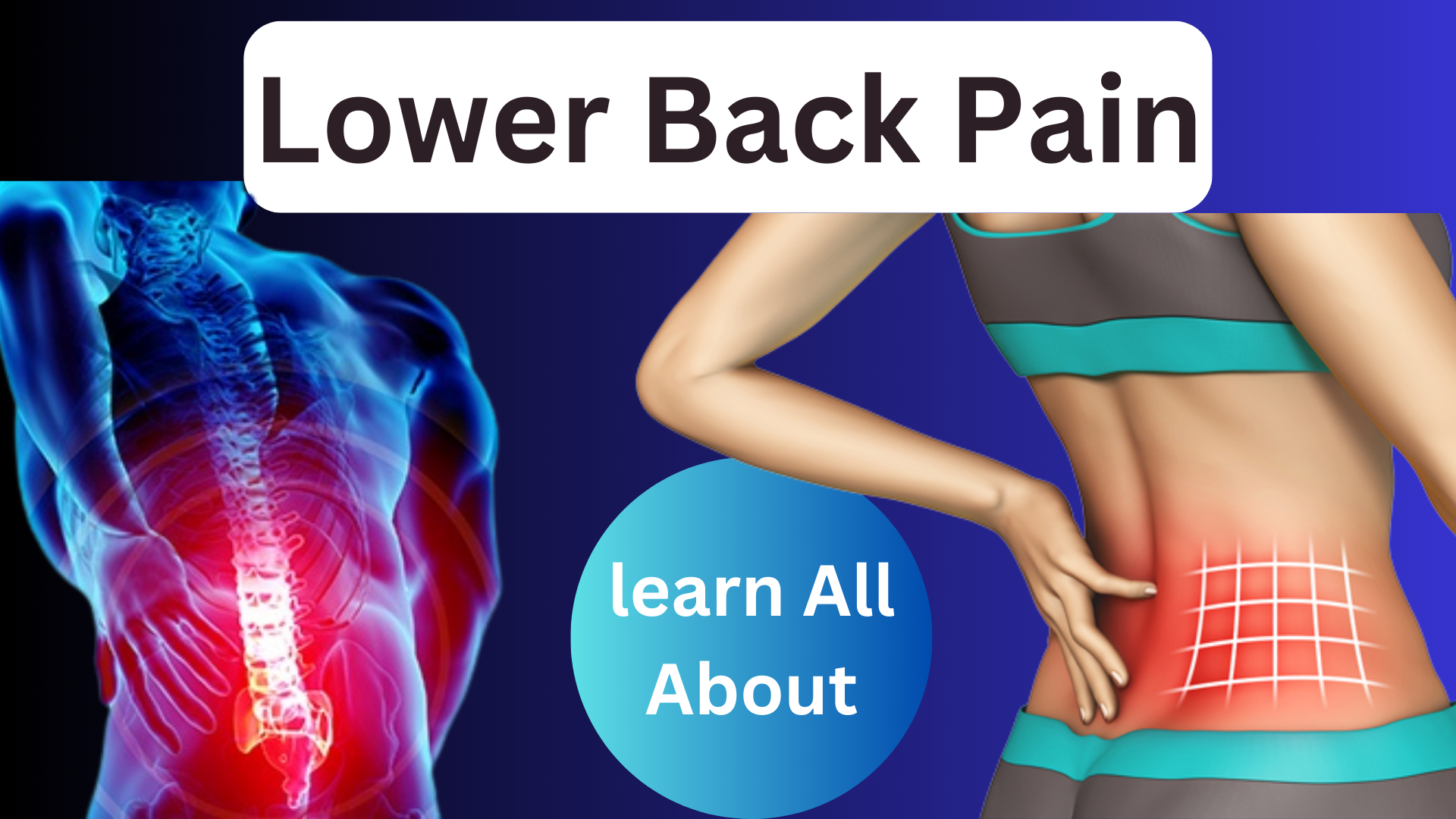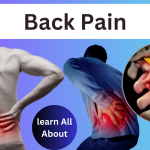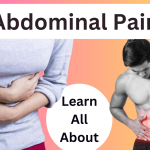Low back pain can result from a variety of ailments or disorders, but the most common cause is injuries that affect muscle or tendon.
From little to severe pain is possible due to this pain. Pain can occasionally make it difficult or impossible to walk, asleep, job, or perform other daily activities.
Lower back discomfort often improves with rest, painkillers, or exercise (PT). Injections of cortisone and manual therapies (such as osteopathic or chiropractic treatment) can assist the body recover by reducing pain. Some back conditions and injuries require surgery to treat.
How Normal Is Low Back Pain?
Lower back pain discomfort, of varying degrees, affects over 80% of people at some time. It’s a typical cause for seeing the doctor.
The Following Are Warning Signs for Lower Back Pain:-
- Age: Back discomfort is more common in those over 30. The flexible, rubbery tissue known as disks, which supports the bones of the spine, deteriorates over time. Pain and stiffness may develop when the disks deteriorate and lose their strength.
- Weight: Back discomfort is more common in those who are overweight, obese, or carry additional weight. Overweight people exert strain on their disks and joints.
- Overall Health: Back injuries and strains can result from weak abdominal muscles that are unable to support the spine. Smokers, heavy drinkers, and people who lead sedentary lives are more likely to have back discomfort.
- Work and Lifestyle: Back injuries are more likely to occur in occupations and hobbies that involve heavy lifting or bending.
What Indications Point to Lower Back Pain?
Symptoms of lower back discomfort might appear suddenly or gradually. Occasionally, pain may appear after performing an action, such as bending to pick up something. The cause of your discomfort could occasionally be a mystery.
Other lower back pain signs and symptoms include:-
- Stiffness: You could find it difficult to move or extend your back. Anyone may require do something like a walk to loosen yourself before standing up from the seat because it may take several minutes for you to do so. You can have reduced range of motion.
- Lower Back Muscular Spasms: After being injured, strained lower back muscles may suddenly contract or spasm forcefully. Muscle spasms can result in extreme discomfort as well as difficulties or impossible with standing, walking, or moving.
What Causes Lower Back Pain?
Lower back discomfort is a common complaint that can be caused by a number of different incidents like:
Most cases of back discomfort can be traced to either a strain or sprain. You run the danger of hurting the muscles, tendon, or ligaments if you lift something too heavy or incorrectly.
In certain people, coughing, sneezing, turning, or bending over can all result in back discomfort.
- Fractures: In an event, such as a vehicle crash or a tumble, the spine’s bones may shatter. Humans with particular conditions, which include bone loss or a condition called, are more likely to sustain fractures.
- Disease: Back discomfort can be brought on by infections, cancer, and spinal tumors. Other illnesses may also contribute to back discomfort
How Is A Lower Back Pain Identified?
In addition to asking about your medical history and present symptoms, your doctor will do a physical examination. Your healthcare practitioner could request imaging studies to look for fractured bones or other injuries.
These investigations make your vertebrae, disks, muscles, ligaments, and tendons visible to your doctor in vivid photographs.
Your provider might direct:
- Spine X-ray, which uses radiation to produce images of the bones.
- MRI, which takes images of bones, muscles, tendons, and different soft tissues using magnetic fields and radio waves.
- X-rays or computers are used in a CT scan to produce 3D pictures of bone structure and soft tissues.
- To test your muscles and nerves and look for neuropathy (nerve injury), that can lead to weakness or tingling in the legs, use electromyography, or (EMG).
What Are The Remedies To Treat Back Discomfort In The Lower Back?
With rest, ice, and over-the-counter painkillers (like: Aspadol er 200mg & Tapal er 100mg), lower back discomfort often gets better. You can gradually resume your regular activities once you’ve rested for a few days. By boosting blood circulation to the wounded area, exercise aids in healing.
There are several treatments for lower back pain depending on the cause. They consist of:-
- Prescription pain relievers known as no steroidal anti-inflammatory medicines (NSAIDs) may be recommended by your doctor. Other medications ease back spasms and lower muscle tension. Like: Pain O Soma 500mg & Soma 350mg
- Physical therapy (PT) has the potential to increase muscle strength, hence enhancing spinal stability. PT also improves flexibility and helps to stop subsequent injuries.
- Injections: Your doctor administers medicine by injecting it with a needle into the painful spot. Steroid
- injections reduce swelling and relieve discomfort.
- Surgery: Some wounds and illnesses require surgical treatment. There are numerous different types of low back surgery, several of which employ minimally invasive techniques.
Lower Back Pain On The Left Side During Pregnancy?
Throughout pregnancy, back pain is a common occurrence. This might be due to:-
- The back muscles are being strained by your body’s heavier front.
- Position shifts
- When your stomach expands, your abdominal muscles deteriorate, which results in less support for your spine.
- Sciatica
- Hormones that relax your pelvic ligaments in preparation for labor (if they become too movable, this might hurt)
Treating Left Side Lower Back Pain?
As general, there isn’t much support for therapies for low back pain that isn’t brought on by a particular problem. Painkillers, relaxation, and time will frequently be helpful.
The majority of the time, you may attempt at-home treatments first and then contact a doctor if your pain persists, barring any indications of a serious ailment or a recent accident.
Self-Care Home Remedies Might Consist Of:-
- Ice
- Heat pads
- Topical cream or lotion for pain relief
- These medications are referred to as nsaids.
- Rest (although not for an extended period of time in bed)
- Limiting the things that hurt more
- Exercise
Medical Treatment:-
- Physical exercise
- Anticonvulsant drugs for specific nerve problems
- Anti-muscle relaxants
- Antibacterial drugs for kidney infections
- Nerve paralysis
- Doses of steroids if you have inflammation
- Removing or breaking up a kidney stone
When to Visit the Doctor?
It may be necessary to schedule a follow-up session with your doctor in order to identify the root of your back discomfort Visit a doctor as soon as you can if you experience any of the following:
- You are unable to move or stand.
- You have back discomfort and a high fever, and you can’t control your bowels or bladder.
- Legs are inflamed, tingly, or numb.
- You get intense stomach ache.
- you experience discomfort when pregnant, along with bleeding from your vagina, a fever, or discomfort when peeing
A doctor may be able to recommend a treatment plan for lower back pain that goes beyond over-the-counter medication and home remedies, depending on the underlying reason of your discomfort.
What Diseases cause back pain?
Muscle and ligament strains are common causes of back discomfort. Incorrect lifting techniques, slouching, and a lack of physical activity are all common contributors to these types of injuries. Strains and sprains to the back are more likely to occur in those who are overweight..
When is back pain serious?
When your backache doesn’t improve in just a few days or when you experience some one of the following, it’s time to contact a doctor: Feeling numb and itching. Severe back pain that doesn’t get better with medicine (see the part on treatment). Back pain after falling or getting hurt
Which type of back pain is serious?
- Sharp pain rather than a dull ache: Possible causes include damage to muscles, ligaments, or internal organs in the back or sides.
- Felt all over: If the pain “moves” or “shoots” to the thighs (thigh pain), it may be due to a pinched nerve.
- Legs go weak all of a sudden: Compression nerves in the spine, such as those produced by sciatica or spinal stenosis, can lead to weakness in the limbs. However, stroke can also cause sudden weakness in the legs.
- Incontinence: When accompanied by a loss of bowel or bladder control, back pain may indicate significant nerve compression or a spinal infection such discuses or meningitis.
- Pain or tingling in the buttocks or groyne area: Saddle anesthesia indicates a major problem with the spinal cord or nerves.
What is the fastest way to relieve back pain?
- Sleep Better
- Good Posture
- Medication From the Store
- Prescription Pain Relievers
- Antidepressant Medications
- Physical Therapy
- Ice and Heat
What exercises help back pain?
- Knee To Chest Stretch
- Lower Back Rotational Stretch
- Lower Back Flexibility Exercise
- Bridge Exercise
- Cat Stretch
- Shoulder blade squeeze




